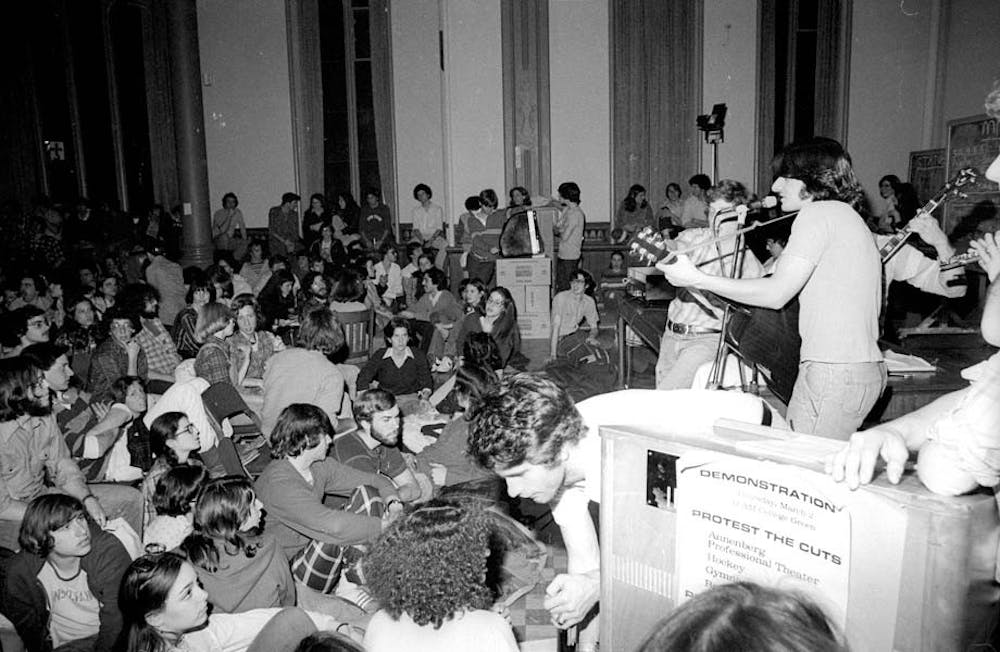
In 1978, a group of 800 students gathered in College Hall to protest severe budget cuts that the University was planning to make for a wide variety of student programs.
The United Minorities Council passed the mark of 35 years of student activism.
This year, the theme of UMC’s annual Celebration of Cultures, which will take place on the Thursday of Fling weekend, will be centered on its anniversary.
Founded in 1978, UMC has had an active role in student advocacy on behalf of minority groups at Penn. Though the umbrella organization has evolved over the years, minority student leaders insist that it has stayed true to its purpose.
March 4 marked the organization’s 35th anniversary. Reflecting on its history and present goals, its chair and other minority student leaders emphasize their continual efforts to reinforce intercultural dialogue and activism.
Speaking for the community
In the wake of a 1978 budget crisis, the University was considering cuts that would affect the arts, sports and academics for students. In response, 800 students gathered for a sit-in in College Hall, led by athletes and the Undergraduate Assembly.
During the protest, the Student Committee on University Priorities laid out their demands, which included funding for sports and the arts and nonvoting student representation at Board of Trustees meetings.
Then Black Student League president Sheryl George won a seat on the Negotiating Committee of Student Committee on University Priorities but still feared that minority issues would not be addressed.
BSL then decided to occupy the Franklin Building to ensure that minority concerns were heard in conjunction with the demands of the UA.
But in order to achieve their goals, black students had to join forces with other minority students. And so the BSL took the lead in founding UMC, which united black, Latino and Asian student groups.
The formation of UMC gave ethnic minority groups an official voice for their collective activism, which in turn gave them greater legitimacy in the eyes of the University’s administration.
Relevance today
UMC now represents 24 student minority groups, such as Penn for Palestine, Natives at Penn, and Queer People of Color.
UMC chair Joyce Kim believes that today the umbrella group has a unique purpose: to facilitate discussion between minority groups including the other four 5B groups (Penn’s main cultural umbrella organizations) and advocate on their behalf.
And while UMC shares much of its mission with other minority umbrella organizations, it still serves a purpose at Penn.
UMOJA co-chair and College sophomore Meron Zeru said that while some students question why UMC still exists after several minority groups have formed to represent diverse interests since its founding, the UMC is still “relevant” because it represents the interests of all minorities at Penn.
“We’re all kind of gunning for our own minority group, and that’s the one group that is for everyone,” she said in reference to the role the UMC plays in relation to other 5B groups.
“I have had a really good experience working with UMC,” she added.
Kim said that for her it is important to support intercultural activism.
“There is no hierarchy in oppression,” she said. “I think sometimes it is really easy to get wrapped up in our own issues … but our strength comes in numbers and solidarity.”
Serving as the UMC financial chair her freshman year, Kim said she was confused as to why there were separate minority groups. Since then, however, she has come to realize that the sheer number of issues facing each distinctive community makes it impractical for one group to address them all. Rather, she said that the “crude” goal of UMC “is to make sure these other groups don’t get so wrapped up in their own issues.”
“I guess that’s our distinctive identity on campus,” she said, noting that there is a “definite” need for the other umbrella organizations.
Currently, Kim said that addressing the issue behind the idea of self-imposed segregation is one of UMC’s goals. She, along with the leaders of the other umbrella organizations, has been working to foster greater intercultural activism and community.
She is pleased with the progress thus far. “In the past … I don’t think [5B] was the most organized or collaborative body, but I think this year the leadership is really coming together,” she said.
“It’s always great to collaborate with UMC on different activities especially when we want to highlight interculturalism,” Lambda Alliance chair and College sophomore Dawn Androphy said. “UMC is a really great space to discuss intersections of identities.”
“I feel very blessed that my board and I are working together, and I feel very passionate and excited about where UMC is going,” Kim added.
The Daily Pennsylvanian is an independent, student-run newspaper. Please consider making a donation to support the coverage that shapes the University. Your generosity ensures a future of strong journalism at Penn.
DonatePlease note All comments are eligible for publication in The Daily Pennsylvanian.




